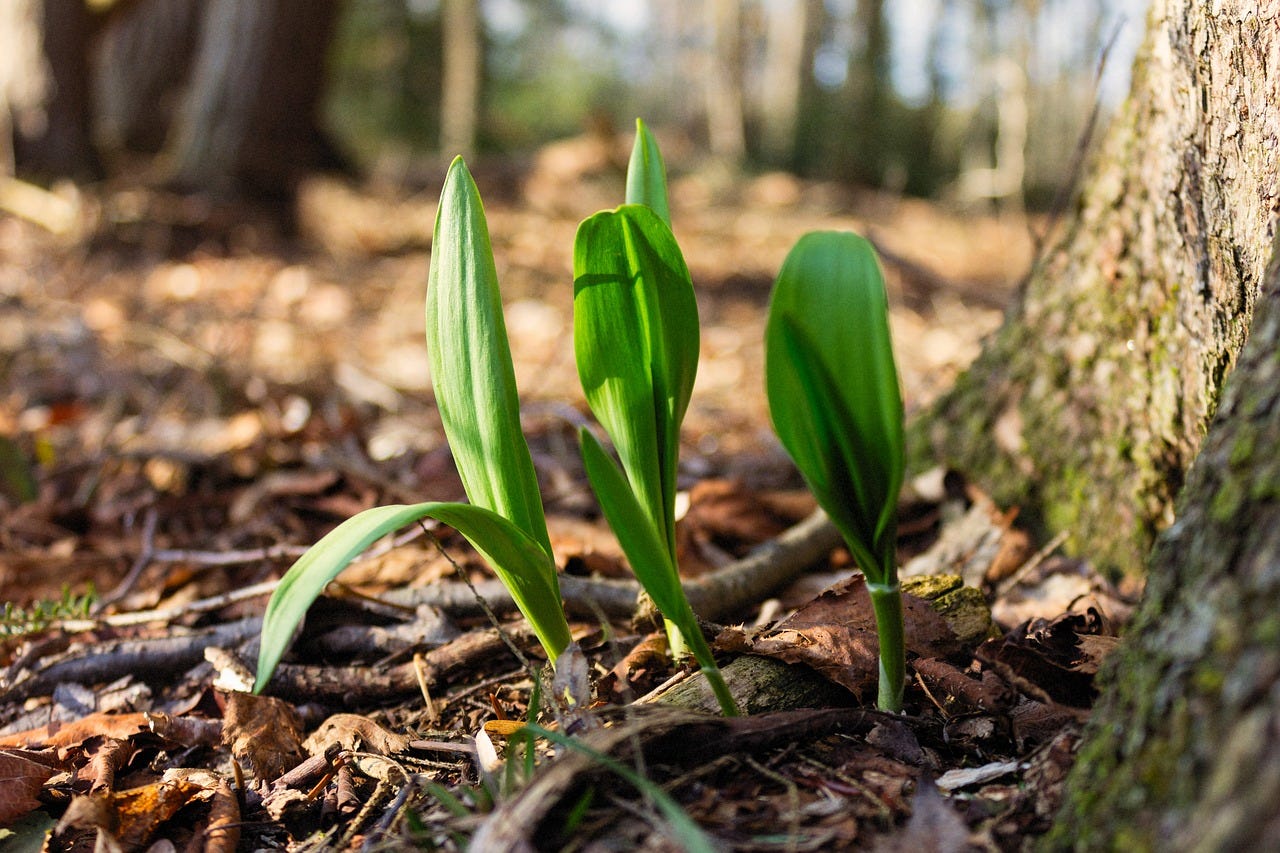Foraging for Flavor: The Wild Ramp Adventure
Embark on a Culinary Journey with Nature's Delightful and Versatile Springtime Treasure
Welcome to the Culinary Farmstead newsletter. I'm Jess Lewis, founder of Culinary Farmstead and an advocate for regenerative agriculture, food sustainability, permaculture, and herbal healing. As a farmsteader, chef, and herbalist, I'm dedicated to promoting sustainable cooking practices that nourish the land and the people who depend on it. In this weekly newsletter, you'll find tips and ideas for growing your own food, cooking with fresh, seasonal ingredients, and how to incorporate herbal medicine into a healthy lifestyle. Join me on a journey of food, farming, and community building.
Hi everyone,
There's something quite enchanting about foraging for wild edibles, especially here on our farm nestled in the woods of the Piedmont foothills of North Carolina. The thrill of the hunt, the connection to nature, and the joy of discovering nature's delicious bounty are all integral to foraging experience. One such treasure, wild ramps, holds a special place in our hearts as food enthusiasts and nature lovers. The world of ramps is fascinating so let’s explore how to find and harvest them and how to make the most of their unique flavor before they disappear until next year.
The Connection Between Food and Nature
Foraging for wild ramps not only offers a chance to create sumptuous dishes but also provides an opportunity to ponder the deep connection between food and nature. As you walk through the woods, searching for these elusive wild leeks, take a moment to appreciate the intricate balance of the ecosystem and how our culinary choices can impact the environment — a principle that guides my philosophy at our farm.
The Magic of Ramps in the Piedmont Foothills and Beyond
The perfect place to find these elusive wild ramps is in moist, shady forests. We certainly have lots of great opportunities here in the Piedmont region of Western North Carolina, but you can easily find them around the forests up and down the East Coast of North America. Ramps often grow in patches, sometimes near streams or in the rich, damp soil beneath the forest canopy. The search for ramps on our farm and the surrounding areas is just as much a part of the experience as the culinary delights they offer.
When is the Best Time to Harvest Ramps?
The arrival of spring heralds the best time to harvest ramps, when they are young, tender, and bursting with a delicate, garlic-like aroma. Although they can also be gathered in the fall, they tend to have a more robust and assertive flavor at that time, due to their maturity.
Identifying Ramps: The Subtle Art
Ramps have a distinctive garlic-like scent, paired with a pleasantly mild flavor. Their broad, flat leaves are usually two to four inches long, displaying hues of green or purple depending on the variety. The bulbs beneath the soil are white or yellow. Before foraging, it is essential to differentiate ramps from their common lookalikes, such as wild garlic and wild onions. While wild garlic shares a similar aroma and taste, it possesses smaller leaves and whiter bulbs. Wild onions, on the other hand, have a stronger flavor and narrower leaves. When in doubt, it's better to be cautious and leave the plant undisturbed.
Foraging Tips: Respect and Reverence
To harvest ramps, gently pull them from the ground, taking both the bulbs and leaves. It is crucial to leave some bulbs in the soil to ensure the plant's continued growth and reproduction, preserving nature's generosity for future generations. Foraging for ramps is a delightful and rewarding experience, but please to do so responsibly:
Harvest only what you need, leaving plenty for others and for nature.
Ensure that some plants are left undisturbed, allowing them to reproduce.
Avoid collecting ramps from potentially contaminated areas.
Savoring Ramps: Culinary Creations
Ramps can be enjoyed raw, cooked, or even pickled, making them an incredibly versatile ingredient. They're delightful additions to omelets, salads, and soups, imparting their delicate, garlicky essence to a wide array of dishes. Probably one of my favorite ways to enjoy them is in a pesto - who doesn’t love a fresh pesto on crostini or pasta?? (see my recipe below)
The Joy of Foraging: A Culinary Adventure
Foraging for wild ramps is an adventure that brings us closer to nature and its remarkable offerings. As you savor the delightful taste of ramps and the dishes you create with them, remember the lessons and experiences from your journey into the wild. Let your culinary creations be a testament to the beauty and abundance of the natural world we are fortunate to call home. Happy foraging and bon appétit!
A Flavorful Finale: Ramp Pesto Recipe
To celebrate your successful foraging adventure, try creating this vibrant and delectable Ramp Pesto, perfect for pasta, crostini, or as a delightful addition to your favorite dishes.
Ingredients:
2 cups ramp leaves, coarsely chopped
1/2 cup grated Parmesan cheese
1/3 cup pine nuts or walnuts
1/2 cup extra-virgin olive oil
Salt and pepper, to taste
Instructions:
In a food processor or blender, combine the chopped ramp leaves, grated Parmesan cheese, and pine nuts or walnuts. Pulse the mixture until it is coarsely ground.
Gradually drizzle in the olive oil while the food processor or blender is running, continuing to blend until the mixture is smooth and well combined. If the pesto is too thick, you can add a bit more olive oil to achieve the desired consistency.
Season the ramp pesto with salt and pepper to taste. Adjust the seasoning as needed.
Transfer the pesto to a jar or an airtight container and store it in the refrigerator for up to one week. You can also freeze the ramp pesto in ice cube trays, and once frozen, transfer the cubes to a freezer bag for longer storage.
Enjoy your homemade ramp pesto on pasta, as a spread on crostini, or as a flavorful addition to grilled vegetables, fish, or chicken.






